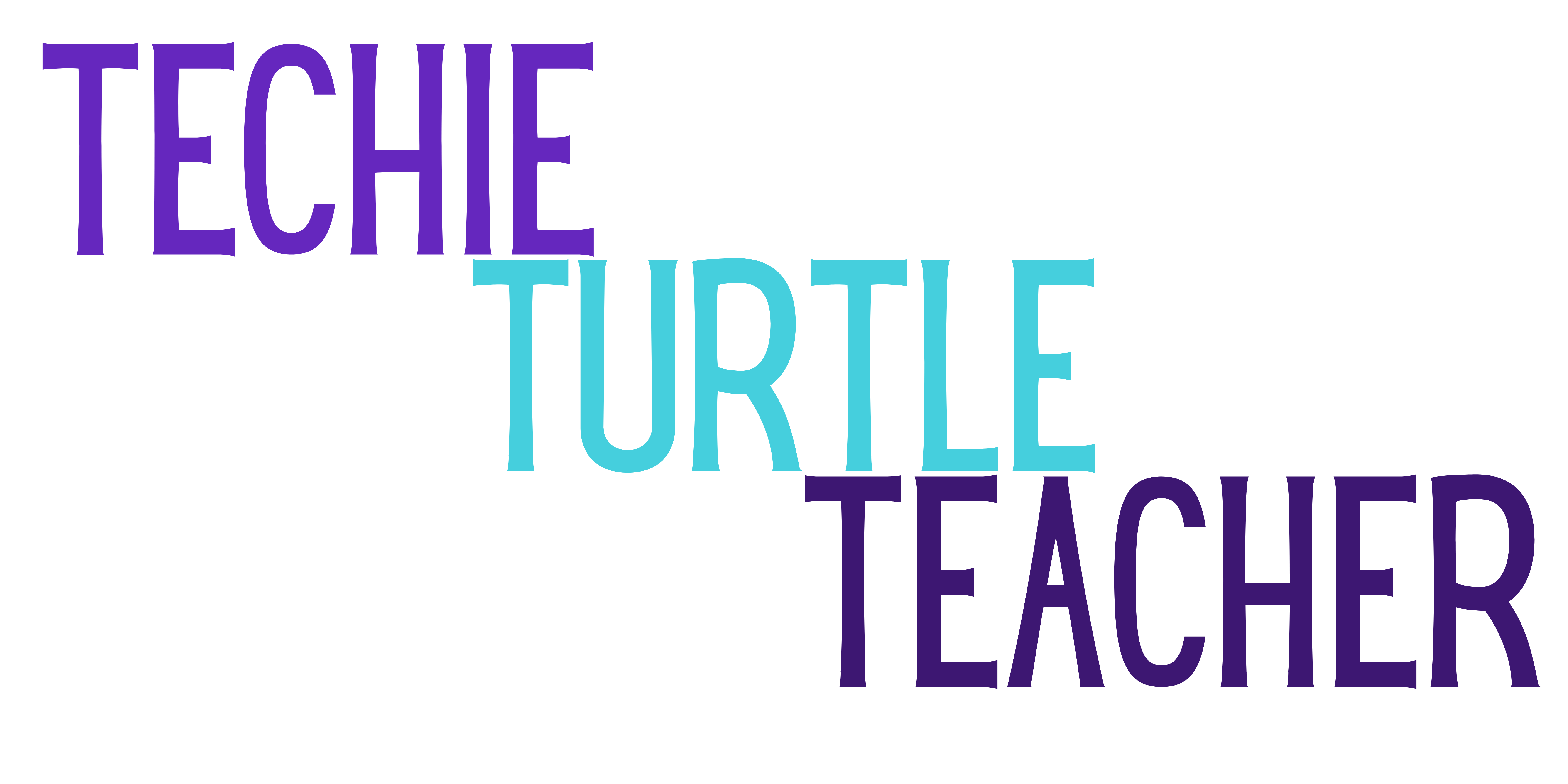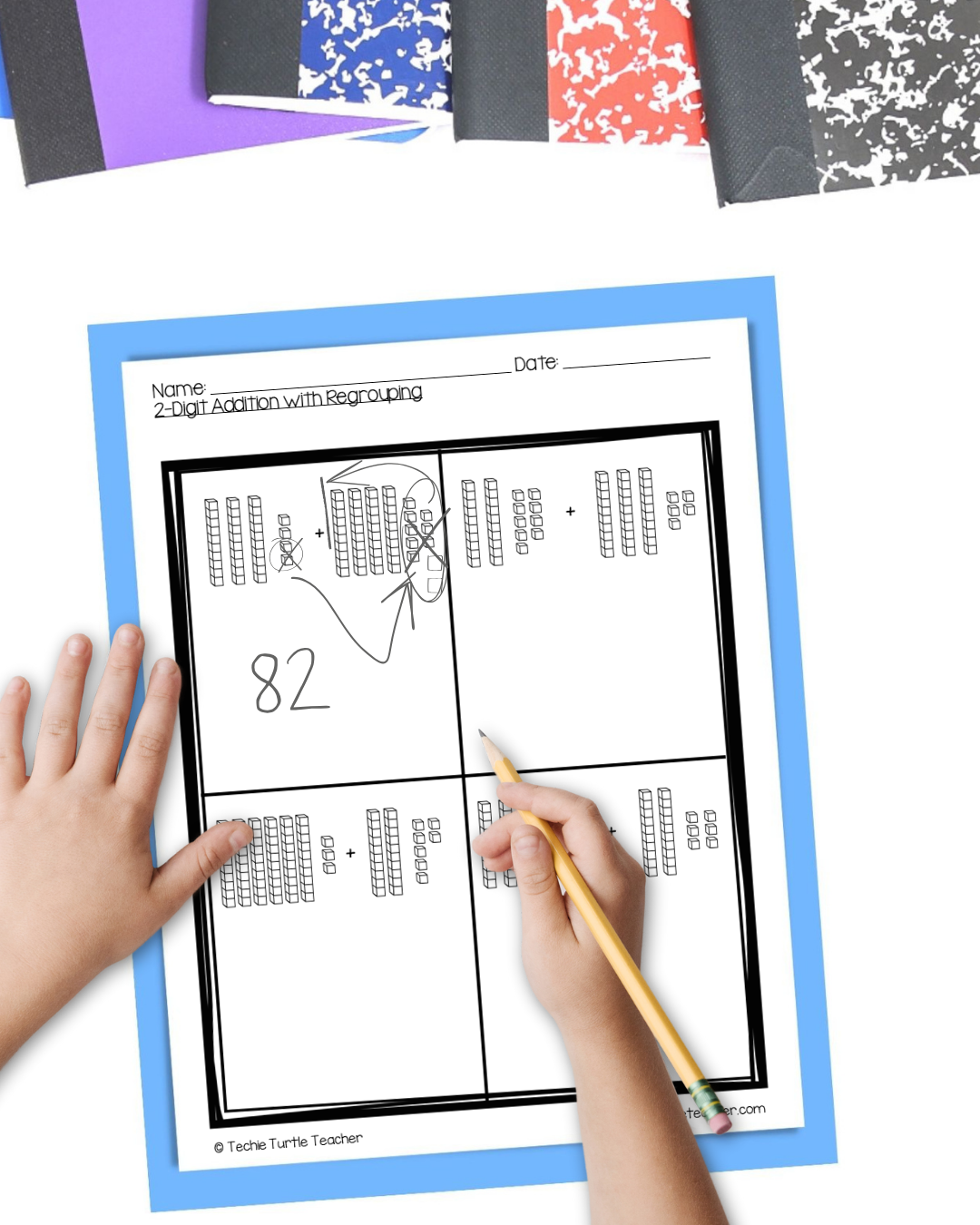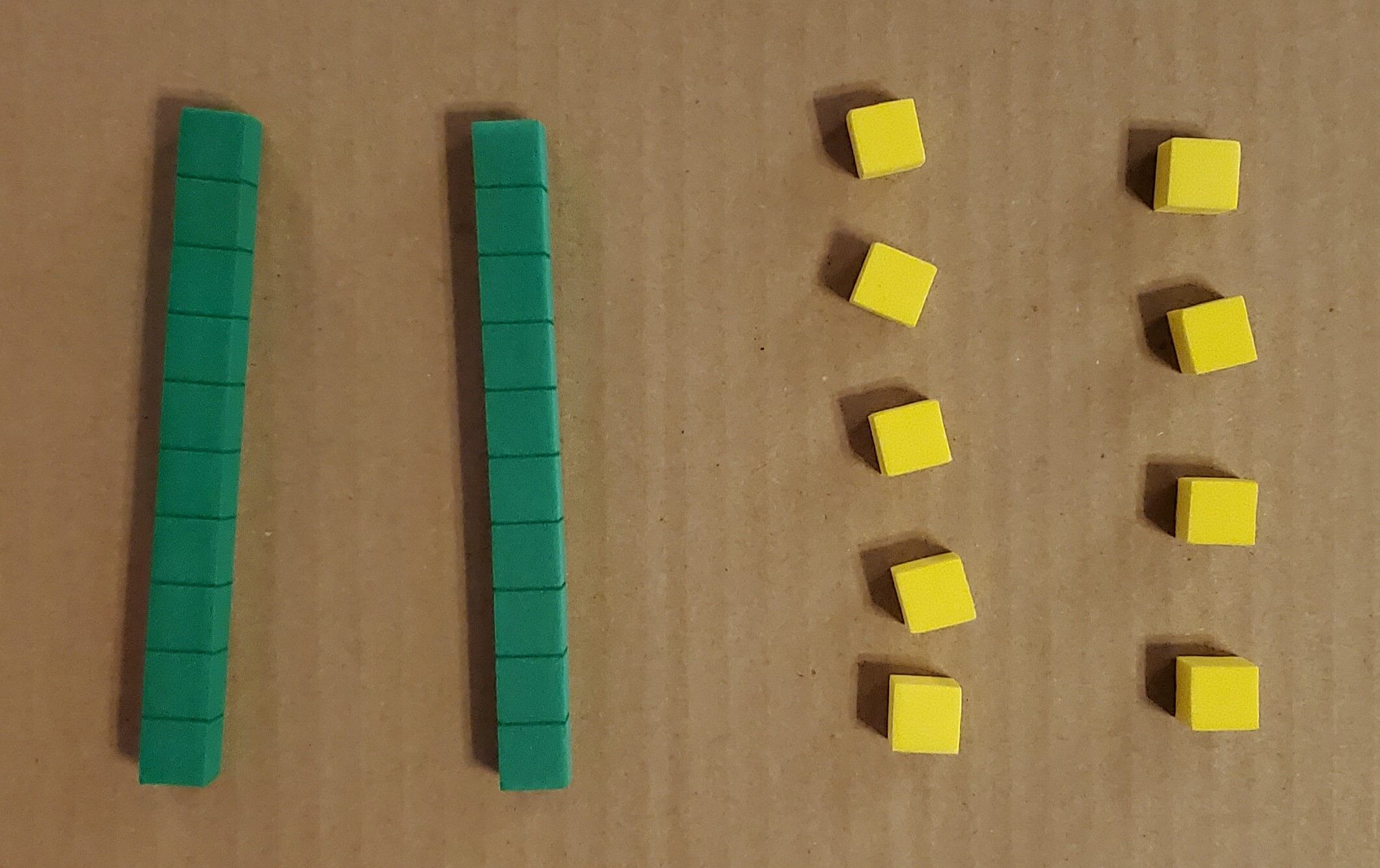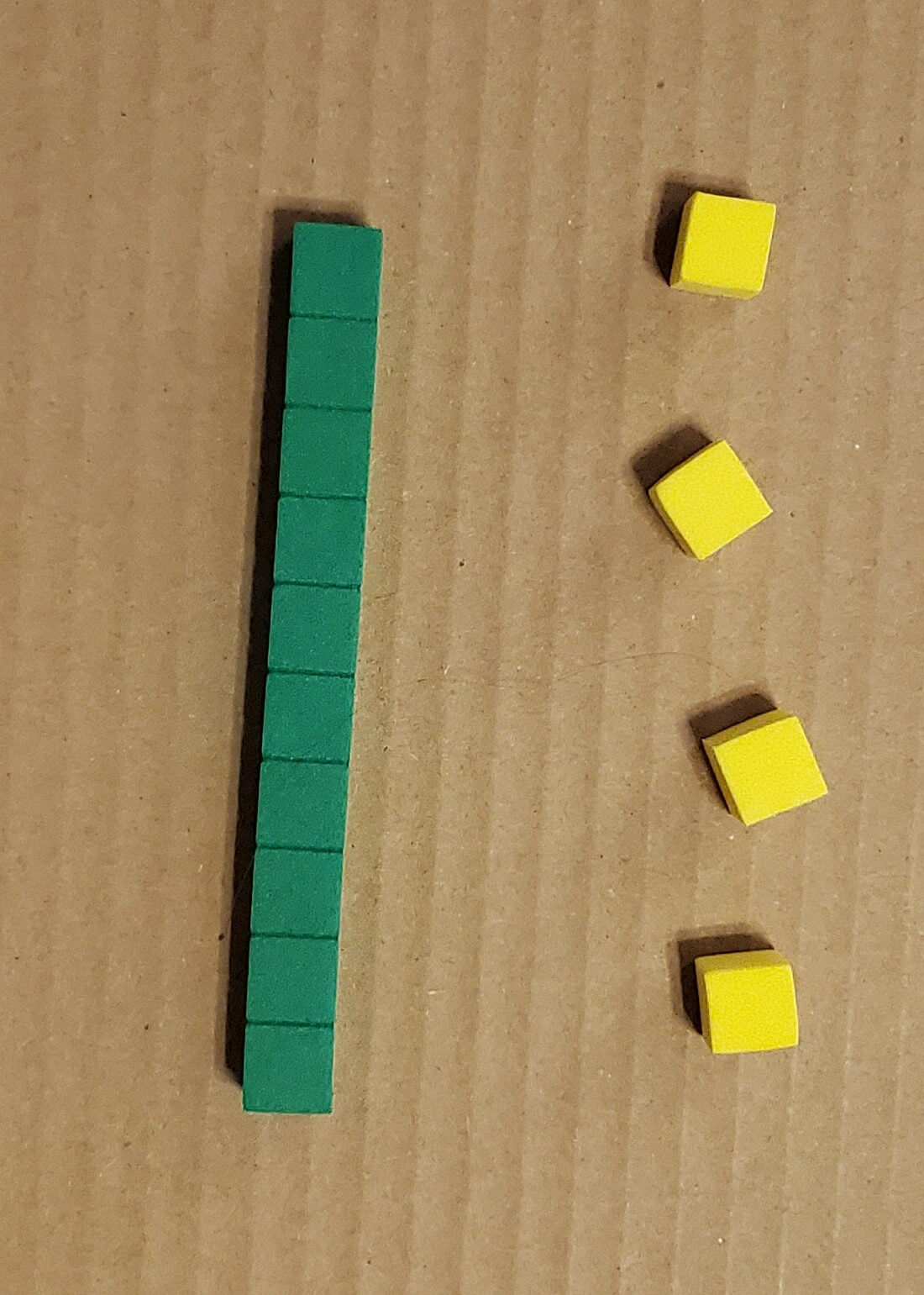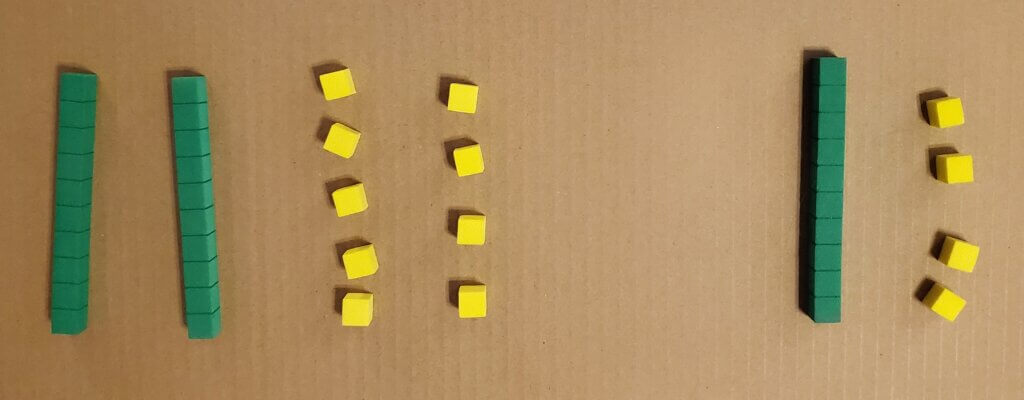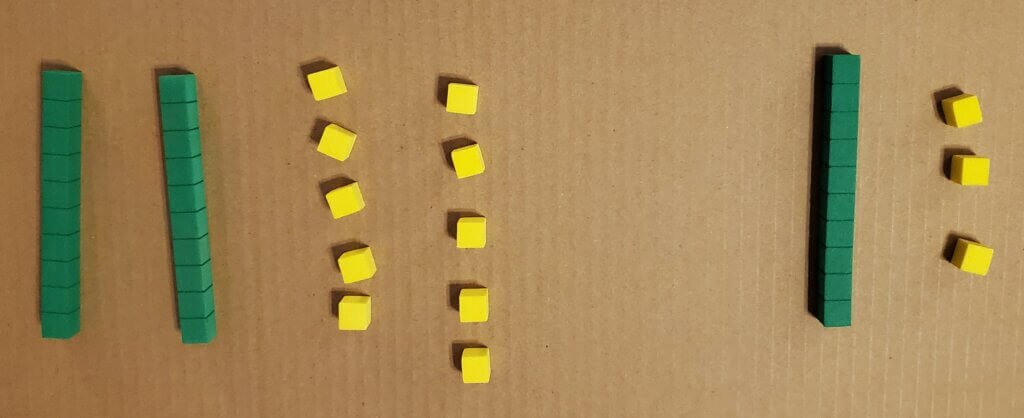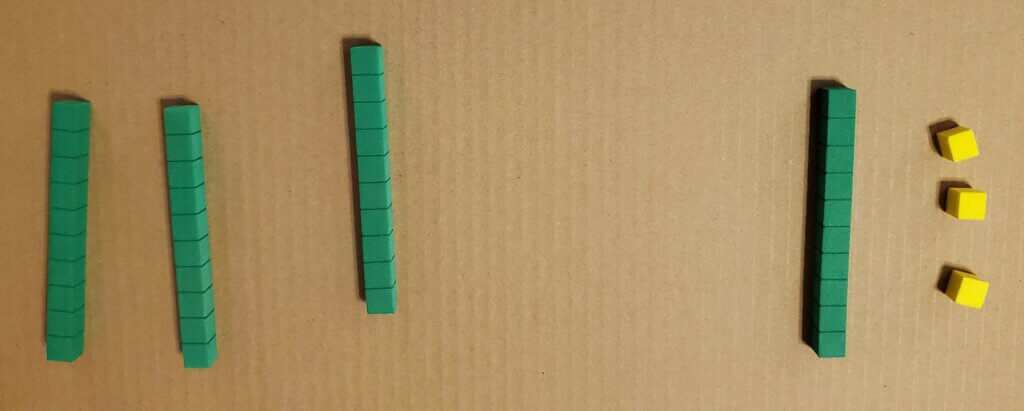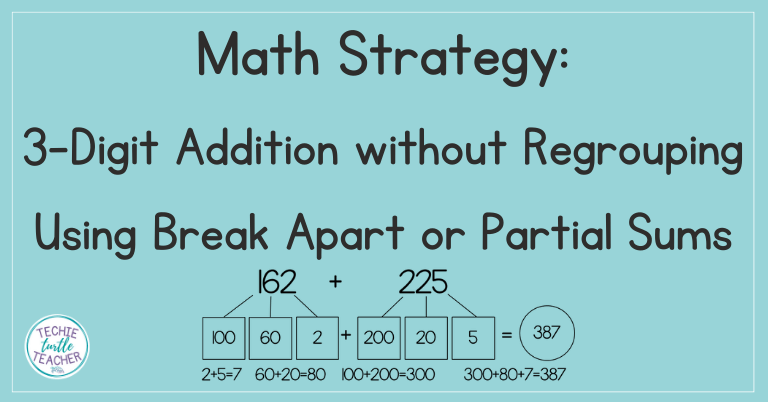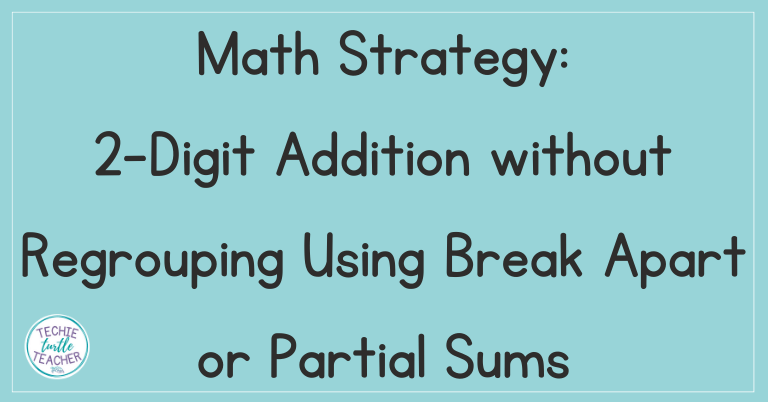Table of Contents
Teaching addition with regrouping using base ten blocks is one of the most effective ways to help your students truly understand what’s happening when they regroup.
Instead of memorizing steps, students see the process – and that visual connection builds confidence and accuracy.
If your students are still struggling with 2-digit addition, especially when regrouping is involved, this strategy can make all the difference.
And the best part?
Once they have the foundation, they can apply it across multiple strategies with ease.
Why Start with Base Ten Blocks?
When you’re introducing 2-digit addition with regrouping, base ten blocks are the most concrete strategy.
They’re a natural next step for students who have already practiced problems without regrouping using base ten manipulatives, number lines, or breaking apart numbers.
I always start with physical base ten blocks because they help students see what’s happening.
They can move pieces around, count the ones, and physically trade ten ones for a ten.
That hands-on experience makes the regrouping process less abstract and more meaningful.
Want a tip that helps during whole group lessons?
I love using these magnetic base ten blocks when modeling problems on the board.
They’re perfect for visual demonstrations – and a great way for students to come up to the board and show their thinking to the class.
If you’re looking for more ways to simplify your prep, my 2-digit addition with regrouping resource includes printable practice pages that walk students through each strategy – physical blocks, drawings, and stick-and-dot models – so you don’t have to create everything from scratch.
Step-by-Step: Solving 29 + 14 with Base Ten Blocks
Let’s walk through a real example:
29 + 14 = ?
Step 1: Build 29 and 14 using base ten blocks.
Step 2: Combine the ones. In this case, 9 ones from 29 and 4 ones from 14 equals 13 ones.
Step 3: Regroup. Take 10 of those ones and trade them for a ten.
Step 4: Add up the tens and leftover ones:
2 tens (from 29) + 1 ten (from 14) + 1 regrouped ten = 4 tens
3 ones remain after regrouping
That’s the beauty of addition with regrouping using base ten blocks – students can physically see why 9 + 4 turns into 3 ones and 1 ten.
From Manipulatives to Drawings
Once your students are comfortable with base ten blocks, it’s time to transition to drawing them on paper.
Let’s take the same problem, 29 + 14, and draw the tens and ones.
Start by sketching 2 tens and 9 ones for 29, then 1 ten and 4 ones for 14.
Then, circle a group of 10 ones, cross them out, and draw an extra ten.
Now you have:
4 tens and 3 ones
Total: 43
Important Note:
Make sure you DO NOT count the ones that are circled and you DO count the ten that you used to replace the ones.
Using addition with regrouping using base ten blocks in drawn form gives your students continued visual support, even after you move away from the hands-on manipulatives.
My resource includes structured practice pages for this stage too – no prep required!
Once the students master using base ten blocks to show the regrouping, you can take it a step further.
Using Sticks and Dots for Even Faster Problem Solving
As your students become more confident, introduce sticks and dots as a quick way to represent tens and ones.
Sticks for tens. Dots for ones.
If you taught this way when adding numbers without regrouping, your students should be familiar with it.
This simplified method makes it easy to check student work, and it’s perfect for independent practice or morning tubs.
My resource includes stick-and-dot pages too, giving you an easy way to differentiate for different levels of learners.
Addition with Regrouping Using Base Ten Blocks by a First Grader
Ready to Save Time and Build Confidence?
If you’re looking for no-prep, print-and-go materials to teach addition with regrouping using base ten blocks, I’ve got a classroom-tested resource that covers:
✅ Base ten blocks
✅ Drawing regrouped blocks
✅ Stick-and-dot models
✅ Step-by-step examples
✅ Scaffolded practice pages
➡️ Click here to get the full resource on TpT
It’s everything you need to teach this important strategy – without spending hours at your desk.
Want to try this strategy with your students before committing to the full resource?
Download the free sample worksheets and see how it works in your classroom.
Need help or have questions?
If you need help or have questions, the easiest way to reach me is to DM me on Instagram @techieturtleteacher.
Pin this to Pinterest for later

